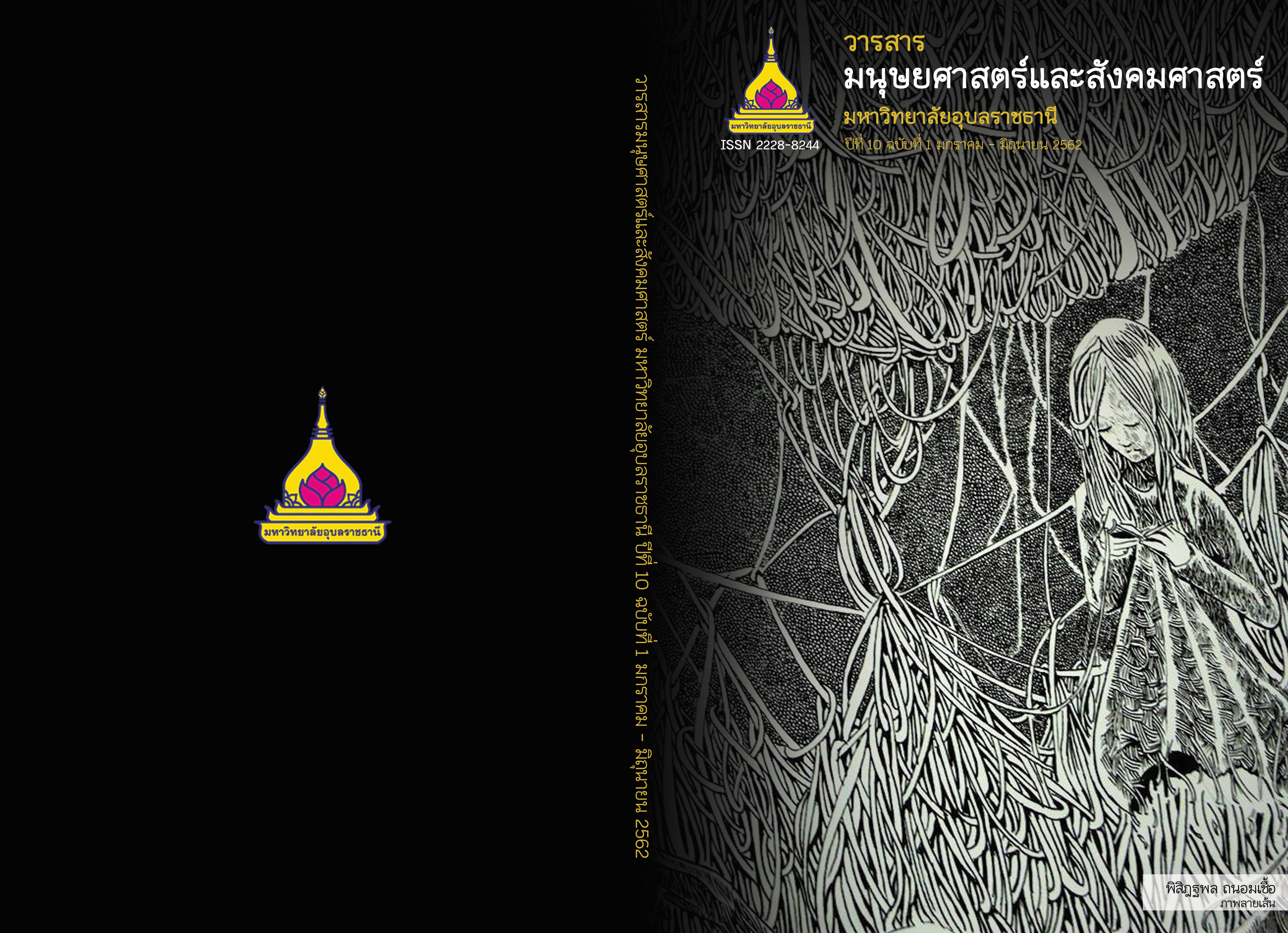กลวิธีทางภาษาที่ใช้ในการตอบรับการตักเตือนในภาษาไทยและข้อคำนึงที่เป็นเหตุจูงใจ “บทความเรื่องนี้ได้ถูกถอนออกจากวารสารฯ เนื่องจากการตีพิมพ์ซ้ำซ้อนของบทความ”
Main Article Content
บทคัดย่อ
บทความวิจัยนี้มีวัตถุประสงค์เพื่อต้องการศึกษากลวิธีทางภาษาที่ผู้พูดภาษาไทยใช้ในการตอบรับการตักเตือนและข้อคำนึงที่เป็นเหตุจูงใจหรือปัจจัยที่ผู้พูดภาษาไทยคำนึงถึงในการเลือกใช้กลวิธีทางภาษาในการตอบรับการตักเตือนตามแนวคิดวัจนปฏิบัติศาสตร์แนวปลดปล่อย (Emacipatory Pragmatics) โดยใช้แบบสอบถามประเภท Discourse Completion Test (DCT) จากกลุ่มตัวอย่างผู้พูดภาษาไทยที่เป็นนักศึกษาระดับปริญญาตรีหลากหลายคณะและหลากหลายชั้นปีจำนวน 100 คน และจากการสัมภาษณ์เชิงลึกกลุ่มตัวอย่างจำนวน 30 คน ผลการวิจัยพบว่าผู้พูดภาษาไทยเลือกใช้กลวิธีทางภาษาแบบลดน้ำหนักความรุนแรงในการตอบรับการตักเตือนมากกว่ากลวิธีทางภาษาแบบตรงไปตรงมา ส่วนข้อคำนึงที่เป็นเหตุจูงใจหรือปัจจัยที่ผู้พูดภาษาไทยคำนึงถึงในการใช้กลวิธีทางภาษาในการตอบรับการตักเตือนมี 2 ส่วน คือ 1.ข้อคำนึงที่เป็นเหตุจูงใจ หรือปัจจัยในส่วนที่เป็นวัตถุประสงค์ของการสนทนา และ2.ข้อคำนึงที่เป็นเหตุจูงใจ หรือปัจจัยในส่วนที่เป็นปริบทของการสนทนา โดยการรักษาความสัมพันธ์ของคู่สนทนาเป็นข้อคำนึงที่เป็นเหตุจูงใจหรือปัจจัยที่ผู้พูดภาษาไทยส่วนใหญ่คำนึงถึงมากที่สุดในการใช้กลวิธีทางภาษาในการตอบรับการตักเตือน พฤติกรรมทางภาษาดังกล่าวมีความสัมพันธ์กับปัจจัยทางสังคมวัฒนธรรม 3 ประการ ได้แก่ 1. การมีมุมมองตัวตนแบบพึ่งพา (an interdependent view of self) 2.ความเป็นสังคมแบบอิงกลุ่ม (collectivism) และ3.ความเป็นวัฒนธรรมปริบทสูง (High context culture )
Article Details
บทความที่ได้รับการตีพิมพ์เป็นลิขสิทธิ์ของวารสารมนุษยศาสตร์และสังคมศาสตร์ มหาวิทยาลัยอุบลราชธานี
ข้อความที่ปรากฏในบทความแต่ละเรื่องในวารสารวิชาการเล่มนี้เป็นความคิดเห็นส่วนตัวของผู้เขียนแต่ละท่านไม่เกี่ยวข้องกับมหาวิทยาลัยอุบลราชธานี และคณาจารย์ท่านอื่นๆในมหาวิทยาลัยฯ แต่อย่างใด ความรับผิดชอบองค์ประกอบทั้งหมดของบทความแต่ละเรื่องเป็นของผู้เขียนแต่ละท่าน หากมีความผิดพลาดใดๆ ผู้เขียนแต่ละท่านจะรับผิดชอบบทความของตนเองแต่ผู้เดียว
References
Hall, S. (1976). Visual culture: the reader. London;: SAGE Publications.
Hanks,W, Ide,S, and Katagiri,Y. (2009). Introduction Towards an emancipatory pragmatics. Journal of Pragmatics 41: 1-9
Hofstede, G. (1984). Culture's consequences: international differences in work-related Values. Beverly Hills: Sage Pub.
Hofstede, G. (1987). Culture's consequences: international differences in work- related values .Beverly Hills : Sage Pub.
Jandt, F. E., and P.B. Pederson. (1996). Constructive conflict management: Asia – Pacific cases. ThousandOaks;CA: Sage Publications.
Klauser, W, J. (1981). Reflections on Thai Culture. Bangkok: Suksit Siam.
Markus, H. R., and Kitayama,S. (1991). Culture and the Self: Implications for Cognition, Emotion, and Motivation.Psychological Review98, 2:224-253.
Mulder, N. (1996). Inside Thai society : An interpretations of everyday life. Amsterdam: Pepin Press.
Panpothong, Natthaporn. (2012). Pragmatics in Thai. (Unpublished). (in Thai)
Podhisita, C. (1998). Buddhism and Thai world view.In Amara Ponsapich(eds), Tradittionnal And Changing Thai World View, pp. 29-62. Bangkok: Chulalongkorn University Press.
Pongsapich, A (eds). (1998). Traditional and changing Thai world view. Bangkok: Chulalongkorn University Press. (in Thai)
Triandis, H, C. (1995). Individualism and collectivism. Boulder: Westview Press.
Yaowarittha, Chanwit. (2011). The Concept of "Bunkhun" and Three Types of Speech Acts in Thai Society Chulalongkorn University, Bangkok. (in Thai)

